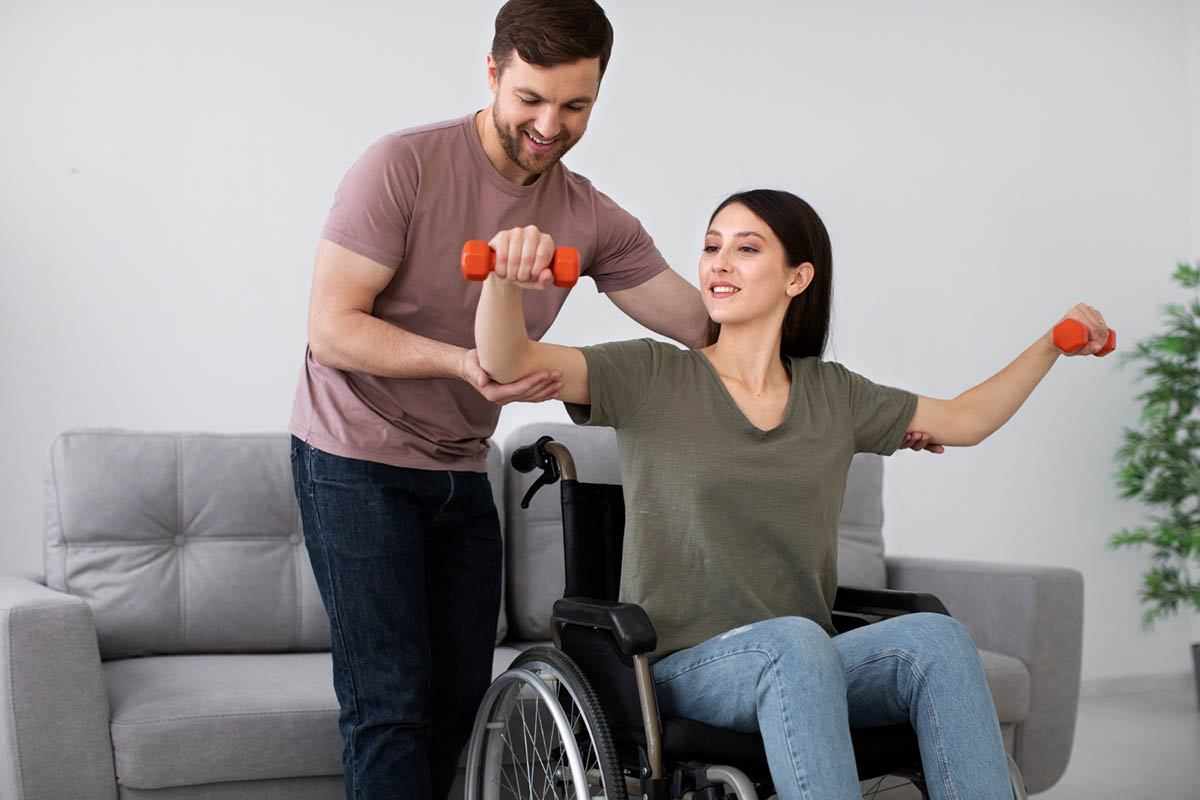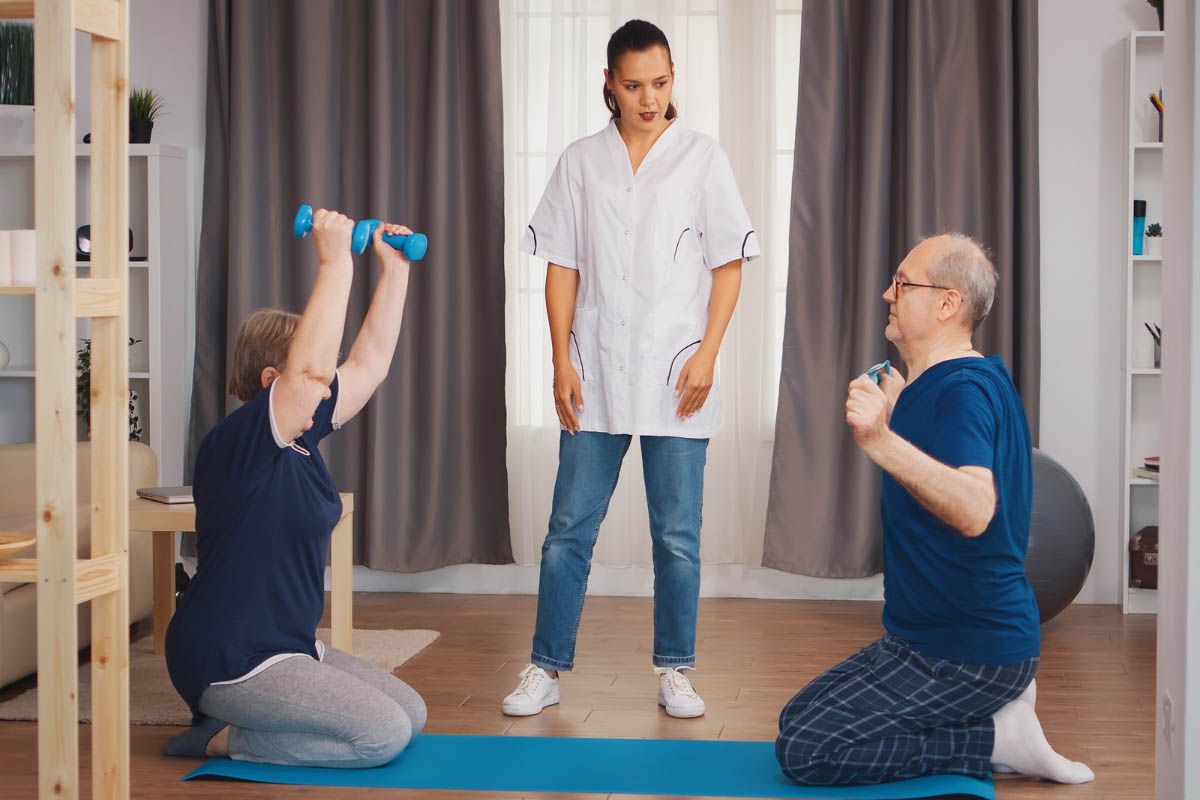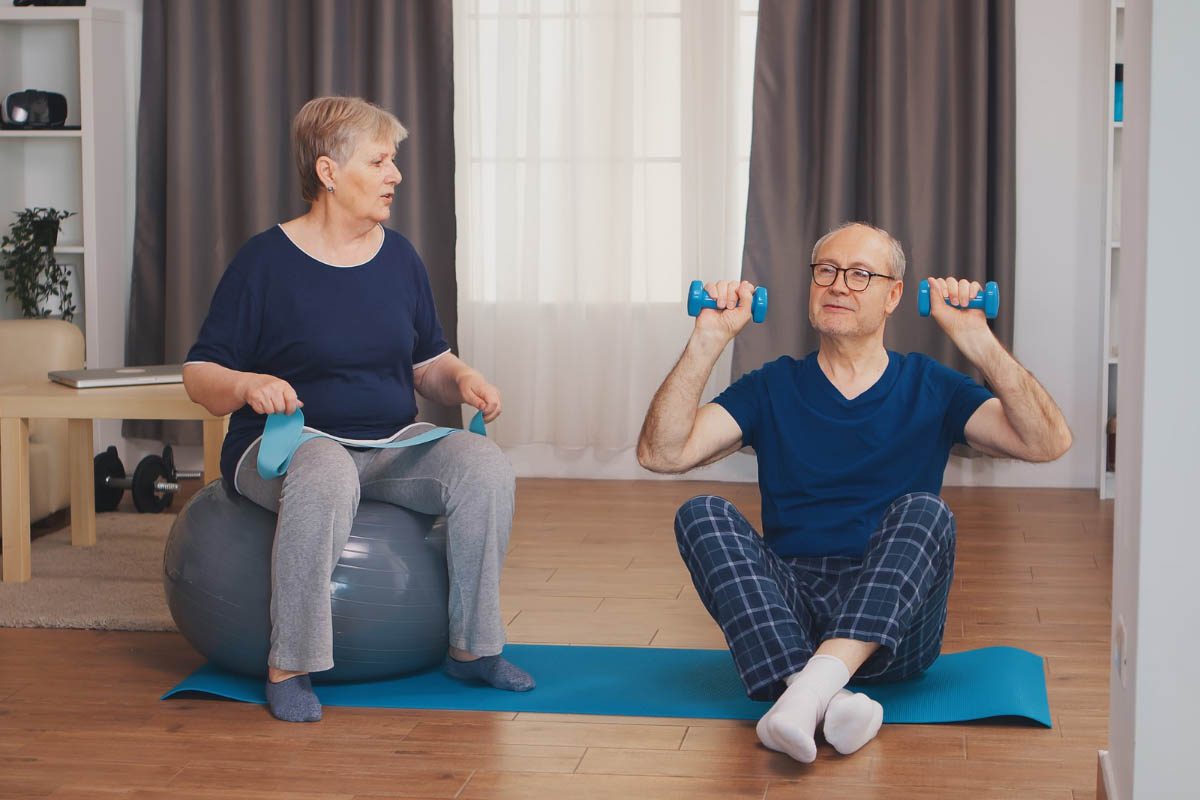Mobility is a fundamental element of a healthy and active lifestyle, and it is essential to sustain it for your overall well-being. Medical conditions like arthritis or injuries can impair mobility, but physical therapy treatments are vital in improving functional mobility and addressing mobility limitations. Physical therapy treatments are an effective and powerful method that can significantly enhance mobility, relieve pain, and help prevent future injuries. Therapeutic exercises are key in restoring movement and strength. This blog explores various ways physical therapy can effectively improve your mobility, discusses its numerous benefits, and offers guidance on how to embark on an exercise plan that focuses on restoring and maintaining your mobility long-term.
What is Physical Therapy?
Physical therapy is a healthcare discipline that uses physical therapy treatments such as hands-on techniques, soft tissue mobilizations, and other methods to help individuals improve their movement and manage pain, whether recovering from acute injury or managing chronic conditions. This includes stretching exercises, resistance training, and balance board exercises, often paired with cold therapy to reduce inflammation and pain during recovery. It involves a personalized treatment plan designed to address specific physical therapy for mobility issues resulting from injury, surgery, or chronic conditions to achieve improved mobility over time. The goal is to restore function, enhance physical performance, and improve the quality of life by offering various treatment options tailored to individual needs.
If you’re in Spartanburg, SC, Progressive Mobility Physio & Performance’s physical therapy service can provide specialized care tailored to your needs.
How Physical Therapy Improves Mobility
Physical therapy improves mobility by utilizing various tailored techniques and strategies, such as range of motion exercises, mobility exercises, balance issues exercises, and strength training exercises. Techniques like joint mobilization and manual methods are also employed to enhance blood circulation and reduce muscle tension, promoting overall recovery. Research indicates that physical therapy for improving joint mobility through an active exercise regimen and high-intensity exercise therapy, instead of remaining inactive, demonstrates significant advancements in mobility, reflected by a standardized mean difference of 0.18 (95% CI 0.05 to 0.30) and a change score of 0.82 (95% CI 0.54 to 1.10).
The process begins with a comprehensive assessment conducted by a physical therapist, who evaluates your physical condition, movement patterns, and overall functionality. This evaluation is crucial for identifying the root causes of mobility challenges and developing a personalized treatment plan suited to your unique needs. Tailored exercise therapy is fundamental; these specialized programs are designed to strengthen muscles, including leg muscles, boost joint function, and improve flexibility, gradually increasing your range of motion. In addition, manual therapy techniques, including joint mobilization and soft tissue manipulation, are employed to alleviate stiffness, reduce pain, and restore movement. Furthermore, physical therapists play a crucial role in educating patients about proper body mechanics, posture, and strategies to prevent injuries, equipping them with the knowledge to perform daily activities more effectively and maintain their mobility over the long term.
Benefits of Physical Therapy for Mobility

Physical therapy significantly enhances mobility and movement, aids in recovery from surgery or traumatic injury, and addresses age-related musculoskeletal conditions. It provides many advantages for improving mobility, including increased muscle strength, flexibility, and joint function, making it easier to perform everyday activities. Furthermore, physical therapy provides education on injury prevention, reducing the risk of injuries, and fosters a deeper understanding of body mechanics, empowering individuals to sustain their physical health and independence effectively.
Pain Relief
Physical therapy can be highly effective in relieving chronic pain, whether it’s due to injury, neurological conditions, or surgery. For those seeking hip pain relief, targeted therapy can be particularly beneficial in addressing and alleviating discomfort. Addressing the underlying causes of pain through targeted exercises and manual therapy, including electrical stimulation and physical therapy, can reduce discomfort and improve your overall quality of life.
Increase Mobility and Balance
Physical therapy helps increase mobility and balance by strengthening the muscles that support your joints and improving coordination. It allows healthcare professionals to monitor progress and make adjustments. As you progress through your treatment, you’ll notice greater ease in performing everyday tasks and a reduced risk of falls and injuries.
Avoid Surgery
In many cases, physical therapy can help you avoid surgery by addressing the root causes of mobility issues. By improving strength, flexibility, and function, physical therapy can reduce the need for invasive procedures and promote natural healing.
Prevent Injury
Regular physical therapy helps prevent future injuries by improving strength, flexibility, and overall body mechanics, especially in elderly patients or those in nursing homes. A well-designed exercise program can also correct imbalances and weaknesses that may lead to injury.
Getting Started With Physical Therapy: An Exercise Plan to Restore Mobility
Restoring mobility through physical therapy typically involves a customized treatment plan and active exercise regimen. Key components include balance exercises, endurance building, and joint mobility activities. Research indicates that physical exercise therapy significantly enhances mobility, with a standardized mean difference (SMD) change value of 0.82 (95% CI: 0.54, 1.10). The following are key components that play a crucial role in effective rehabilitation:
- Balance: Exercises focusing on improving balance issues help prevent falls and enhance stability. Specialized treatment for balance may be recommended for those at higher risk. Simple exercises using balance boards or other tools can aid in this process.
- Endurance: Building endurance is crucial for maintaining mobility. Activities like walking or cycling help improve cardiovascular fitness and stamina, making it a vital treatment for patients with mobility issues.
- Joint Mobility: Stretching and joint mobilization exercises enhance your joints’ flexibility and range of motion, which is essential for smooth and pain-free movement. These exercises include exercises targeting the pelvic floor muscles.
- Pain Management: Techniques such as ice, heat, and therapeutic modalities are used to manage pain and inflammation, allowing you to engage in physical activities more comfortably.
- Posture: Proper posture is vital for preventing strain and improving overall mobility, which can also help prevent muscle atrophy in patients with reduced activity levels. Physical therapists provide exercises and adjustments to promote good posture.
- Range of Motion: Exercises focusing on increasing the range of motion help you achieve entire joint movement and reduce stiffness caused by tightness in muscles.
- Strength: Strengthening exercises target the muscles that support your joints, improving stability and function and leading to stronger muscles over time. This helps in performing daily tasks with greater ease.
After Physical Therapy: An Exercise Plan to Maintain Mobility
Maintaining mobility after physical therapy is crucial for sustaining your overall health and preventing the recurrence of issues like weak muscle tone. Incorporate strength training, core muscle exercises, and muscle flexibility activities, including physical therapy for hip mobility, into your daily routine. Here are some effective strategies to help you stay active and healthy moving forward:
- Make Exercise a Daily Habit: Integrate regular physical activity into your daily life to ensure your muscles remain strong and your joints stay flexible, as advised by health care professionals. Consistency in movement is vital to preserving the benefits gained through physical therapy.
- Pay Attention to Your Form: Proper technique is crucial to prevent injuries, especially in patients with health complications, and maximize the benefits of exercise. Focus on maintaining good form during your workouts.
- Increase Exercise Intensity as Mobility Improves: As your mobility improves, progressively raise the intensity of your exercises to keep challenging your body under the guidance of a health practitioner. This approach will support ongoing advancements in your physical fitness.
- Maintain Proper Body Mechanics: Pay attention to your body mechanics while performing daily tasks to prevent excess strain and injury, promoting optimal health. Practicing proper movement techniques can help protect your body and maintain your mobility.
- Be Patient as You Recover: Improvement and recovery require time and dedication. Stay patient with yourself as you focus on maintaining your exercise routine and monitoring your pain level to avoid overexertion.
- Consult Your Physical Therapist: Consistent check-ins with your physical therapist ensure you remain on course with your recovery. They can also recommend adjustments to your exercise routine for optimal results.
Is Physical Therapy Right For You?

Physical therapy offers numerous benefits for a diverse array of individuals, including those recovering from orthopedic surgeries, spinal cord injuries, and joint replacements. This includes those recovering from an injury and people managing chronic health conditions or simply looking to improve their overall mobility. If you face mobility challenges or are experiencing discomfort and pain, seeking guidance from a qualified physical therapist can provide valuable insights. They will help assess your situation and determine if physical therapy is the most appropriate course to regain mobility and improve your quality of life.
Conclusion
Physical therapy offers significant benefits for improving mobility, enhancing physical function, and preventing injuries. You can restore and maintain functional mobility by incorporating specialized exercises and strategies into your routine. You can restore and maintain mobility by incorporating targeted exercises and strategies, leading to a more active and fulfilling life. If you’re dealing with mobility issues, consider contacting Progressive Mobility Physio & Performance in Spartanburg, SC, for expert guidance and personalized care.
FAQ
What conditions can physical therapy treat to improve mobility?
Physical therapy can treat various mobility conditions, including arthritis, plantar fasciitis, musculoskeletal dysfunctions, and pelvic floor dysfunction.
How quickly can I expect to see improvements from physical therapy?
Improvements from physical therapy can vary based on individual conditions and goals. Some people may notice changes within a few weeks, while others may take several months. Consistency and adherence to the therapy plan are key factors in achieving results.
What should I bring to my first physical therapy appointment?
For your first physical therapy appointment, bring any relevant medical records, a list of medications, and comfortable clothing suitable for exercise. Be prepared to discuss your medical history, current symptoms, and any specific goals you have for therapy.



